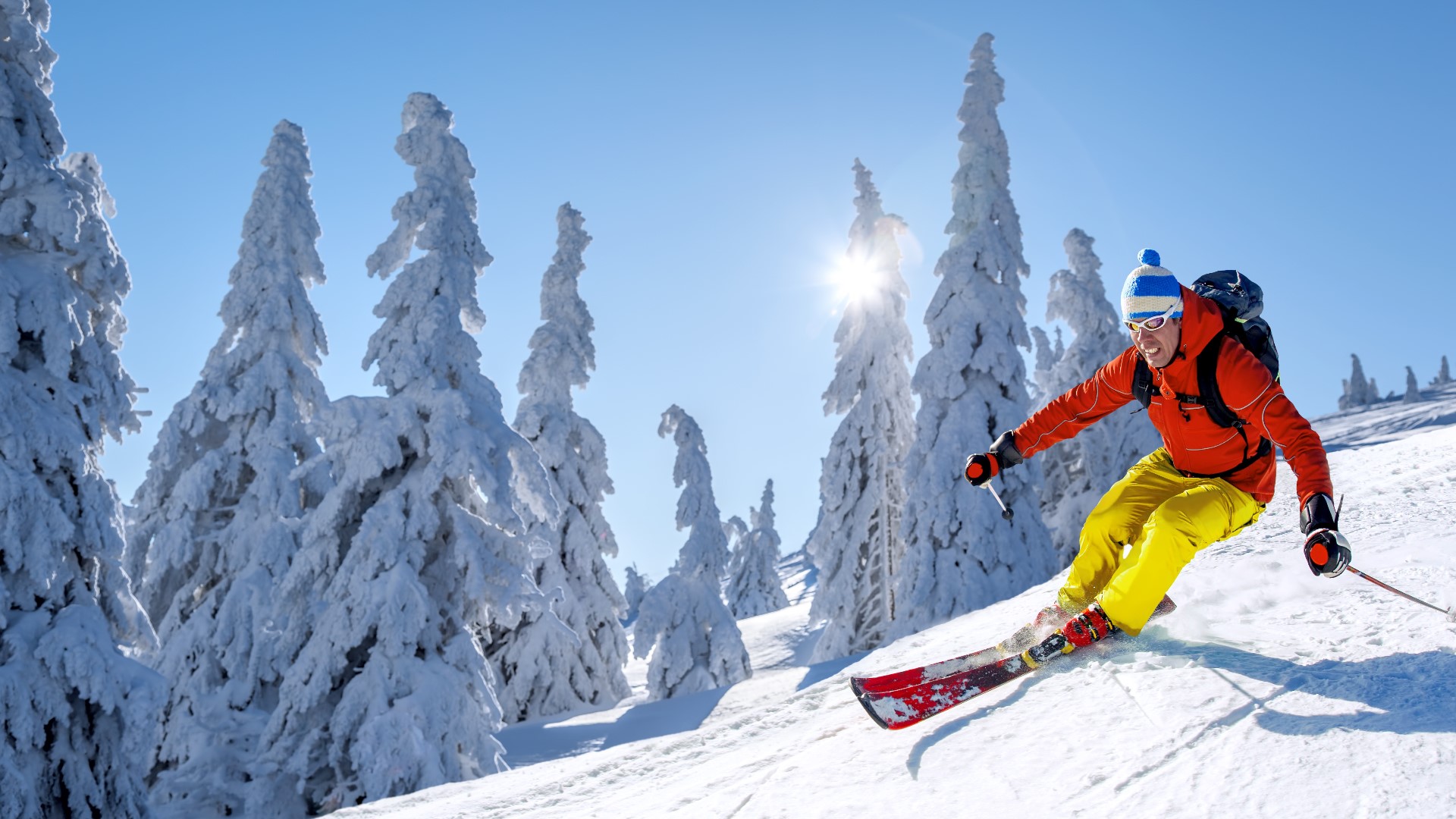CHARLOTTE, N.C. — You can’t always rely on Mother Nature for a winter wonderland here in the Carolinas! So, every year, mountain towns and resorts have to make their own, like at Beech Mountain.
This manufactured snow is often used at the Winter Olympics. In fact, the 2022 Winter Olympics in Beijing is exclusively using man-made snow. Why? In the past forty years, this area of China has averaged less than one inch of precipitation during winter.
That got the WCNC Weather team thinking about how these cities, towns and resorts blow their own snow.
First things first, the weather and atmospheric conditions need to be perfect. Typically, the colder and drier the better – but snowmakers look for a more specific metric – the wet-bulb temperature.
The wet-bulb temperature is essentially the temperature of the atmosphere, factoring in the humidity. To measure it, scientists would take two thermometers with the same temperature reading. On one, they would wrap a wet cloth around it and blow air onto the cloth. As the water on the cloth evaporates, it’ll cool the thermometer.
Sean McNay, the outdoor recreation supervisor for Beech Mountain or “chief snowmaker” as we called him, said they normally look for a wet-bulb temperature of 27 degrees. The best time to find temperatures that cold and air that dry is typically at night, which is when you’ll see the snow machines going full speed.
Now, let’s talk about how they use the wet-bulb temperature and the machines to make snow.
Snow is made by forcing water and pressurized air through a snow gun or cannon. These tiny water droplets are blown through the air using fans. As the droplets move through the air, they are cooled by evaporation. As they quickly freeze, they form into tiny ice pellets. The more hang-time they have, the more snow you’ll get.
For the town of Beech Mountain, they also have a nucleating nozzle on their machines. Using the Joule-Thomson effect (when compressed gas suddenly expands, it leads to heat loss), they shoot compressed air from the machine. It mixes with the water and helps seed the droplets.
“Wham! Right about here we have ice coming out of the machine,” McNay said as he pointed out this special feature. “And then that combines with our water droplets, and that seeds our droplets so they can form little ice pellets.”
Manufactured snow doesn’t look like regular snow since there are tiny balls instead of flakes, but it has uniqueness too. This man-made snow is dense and compact. It’s not the kind of snow that melts after one sunny afternoon. Since water drains through it, it doesn’t get slushy and lasts much longer.
McNay pointed out that the snow from the resort nearby can sometimes last into the month of May. “It’s very resilient stuff,” he said. “It’s absolutely vital for winter sports.”
So, that begs the question. Do folks like the real stuff from Mother Nature or the machine-made snow for shredding the gnar?
His answer: that’s a debate.
“A lot of recreational skiers and snowboarders do actually like the natural snow better because it’s so squishy and you can kind of carve around it,” he points out. But on the other hand, “for the winter Olympics, you’re going to want the tight and compact stuff. They want to go fast.”
No matter which side you’re on, the science behind making snow is fascinating. With this technology, more cities and countries around the world will have the ability and the access to host future Olympic Games.
The town of Beech Mountain has opened a brand new sledding hill for kids under 12 to sled for free. They make their own snow, too, and say the hill will be open through mid-March weather permitting.
Contact Brittany Van Voorhees at bvanvoorhe@wcnc.com and follow her on Facebook, Twitter and Instagram.

